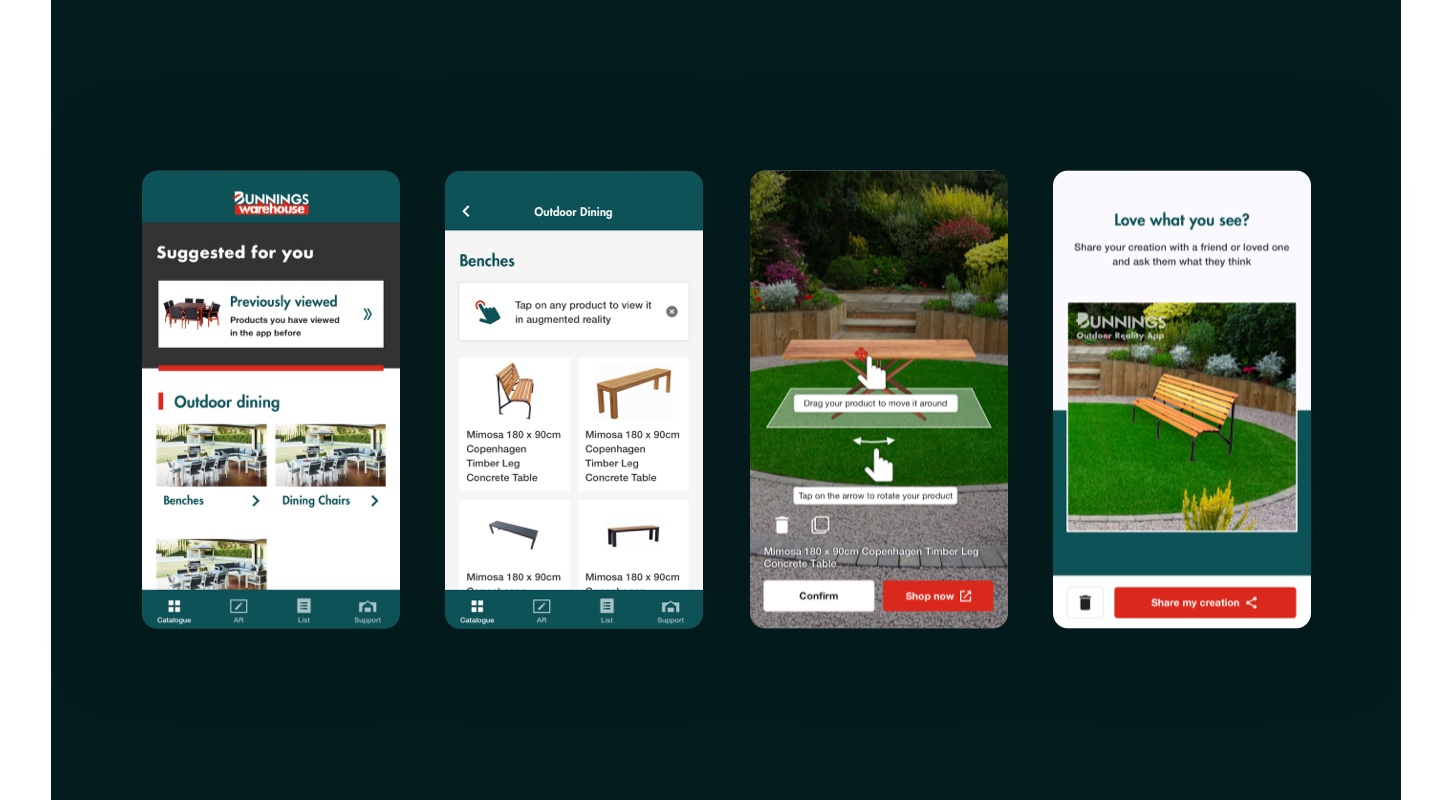Problem
Approach
Competitor research gave us a quick insight into what had been done before – both good and bad. Next, our team of 2 developers, 1 Industrial Designer, and I worked closely to pool our knowledge of best practice UX and usability to not only aspire to be the best in class – but also avoid features we didn’t like in our competitors’ products. Some concepts, such as IA, pattern libraries, and personalization were akin to a typical app or web build. Other considerations, such as ‘how to prevent customers from losing their placed product in a 3D space’ were unique to the AR concept. We guerilla tested our prototype early and often and designed it with the Bunnings target market in mind – erring on the side of simplicity and getting customers into the AR experience in as few taps as possible.
Value delivered
Over the course of the project, my team and I worked closely with our stakeholders to meet and exceed their expectations and the result was an app that received an average rating of 4.8 stars in the App Store and Google Play. This is owed largely to the incredible brand loyalty Bunnings has earned over the years, but our animated tutorials, easy single-handed operation, intuitive UI copy, and clutter-free interface certainly helped add a level of polish that will help Bunnings stay atop the list of Australia’s most loved brands.
